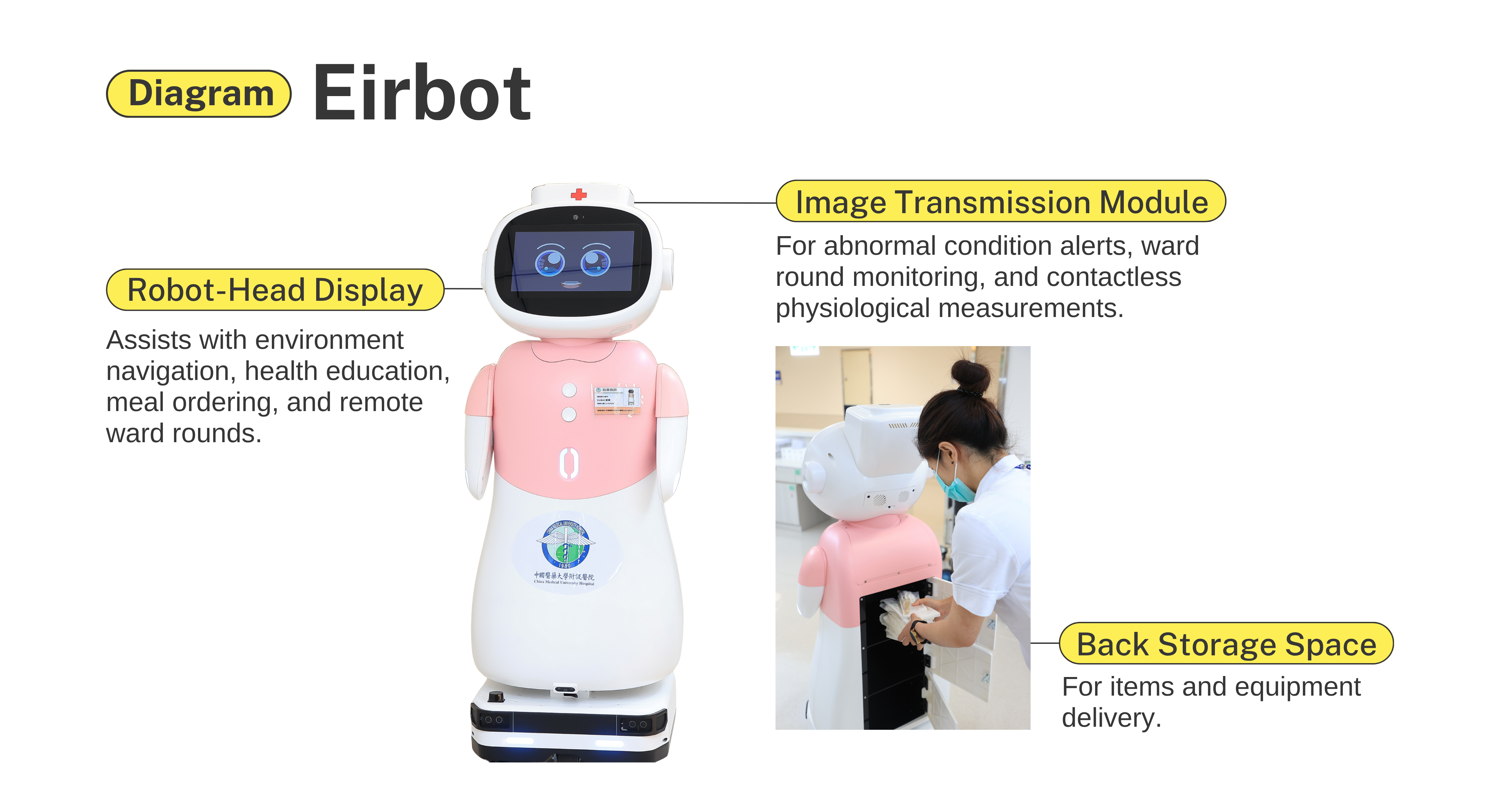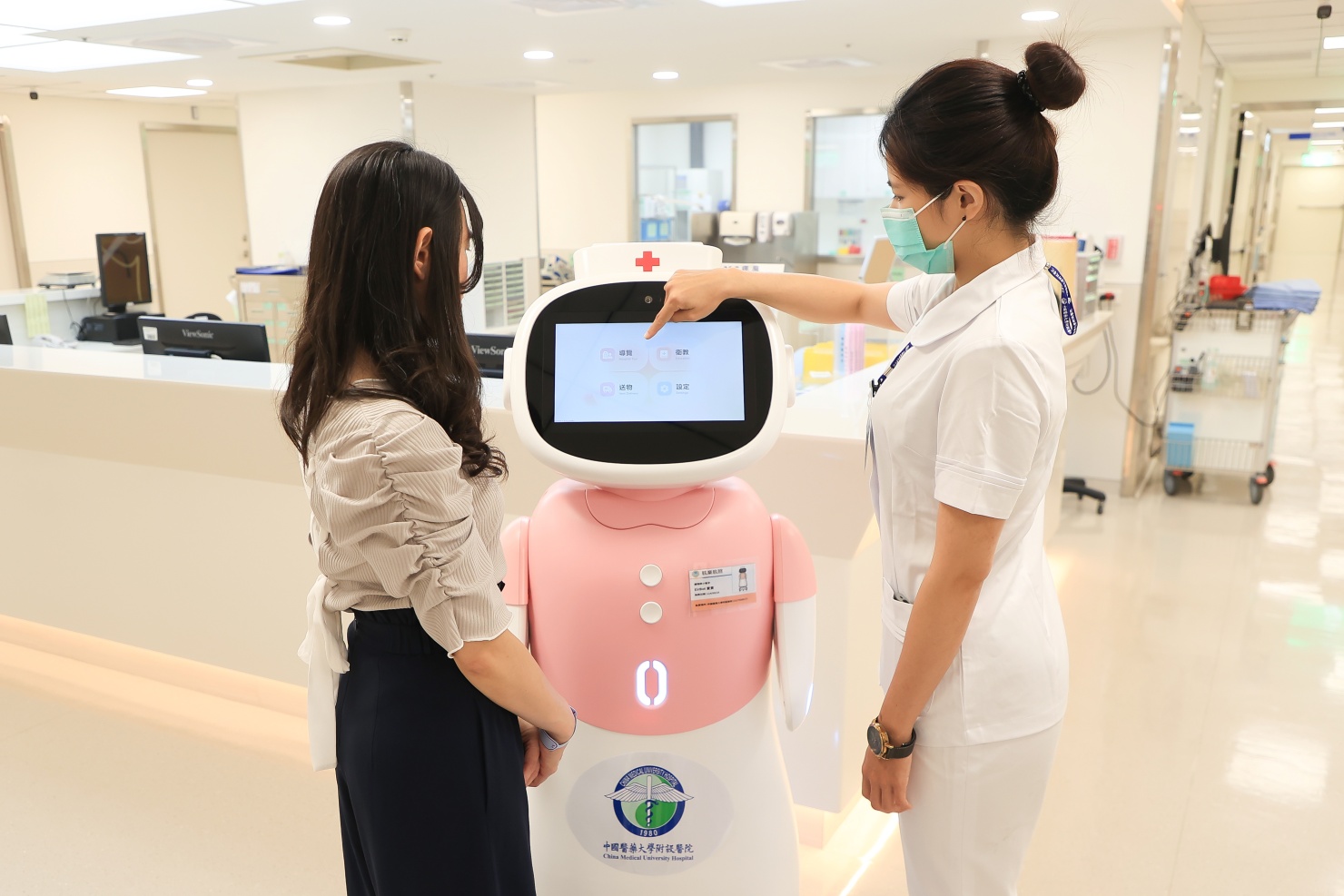
Hospitals Build Robots! CMUHS × EverBot Lighten Nurses’ Workload by 30%
2025-10-23
Source: IBMI (2025 Healthcare+ Expo Taiwan - Booth No. M619a)
A Cross-Sector Push with Instant Chemistry
In June of last year, Dr. Chang-Hai Tsai, Chairman of China Medical University, asked CMUH’s Dr. Cho to evaluate the university's robotics initiatives. Dr. Cho recommended creating practical robots for quicker deployment, ultimately challenging himself with a question: “Who will benefit from these robots?”
"It's important to define the end user. If you make surgical robots, the users will be doctors. Transport robots can work for nurses, cleaners, and admin staff," Cho said. "What do hospitals need the most? Nurses!"

The positioning of Eirbot, described as “Designed for Nurses,” served as its foundational concept. Cho said that nursing is a complex profession, much like being a nanny, with numerous responsibilities. By reducing nurses’ workload, they can concentrate more on patients.
Eirbot now responds to queries in 3 to 5 seconds, providing answers limited to around 80 Chinese characters, which match natural conversation flow and Cho's high standards.
AI “Brain” for a Broader Robot Portfolio
Lee explained that a robust backend system enables robots to share nursing duties. Eirbot serves as the conversational interface, while the real "brain" is in the backend AI servers, connected to 20 or 30 robots at once.
The server is integrated with hospital information systems, allowing the robot to recognize the patient's background, identity, and medical history during conversations. This integration optimizes efficiency and energy consumption, ensuring that each patient receives a suitable response.

Eirbot delivers patient health education.
EverBot will leverage Eirbot's experience to introduce multifunctional robots for cleaning, disinfection, item handling, long-term care, and home care services. "Robots are just one component of the smart healthcare service system. The entire data chain is ten to a hundred times larger," Lee explained.
Replacing 30% of Nursing Tasks
In functional planning, the R&D team adopts a pragmatic approach. Cho emphasizes that the goal isn't to replace nurses but to be a practical aid. “The first-phase target is to replace 30% of nursing tasks, with a long-term goal of reaching 50%.”
“The 1st-generation Eirbot offers four services: environmental navigation, health education, item delivery, and remote ward rounds. The 2nd generation will add contactless physiological monitoring and environmental surveillance. We will apply for medical device certification once the 2nd generation is launched.”
From Hospitals to Underserved Communities
Eirbot is currently in a three-month Proof of Concept (POC) trial at CMUH. “We plan to begin mass production once the POC concludes in December,” Lee said. “We will deploy one or two units on a single hospital floor and scale up.”
Eirbot's applications reach beyond hospitals. Cho presented his vision: “Remote indigenous communities could each have a unit serving residents at community health centers. Eirbot's video chat feature also allows doctors to conduct remote consultations. That’s telemedicine.”

EverBot team develops Eirbot to ease nursing workload.
🔹 Learn more about the products ▸ https://ibmi.pse.is/89q5v3
🔹 Experience and interact with more robots in person ▸ https://ibmi.pse.is/89q669